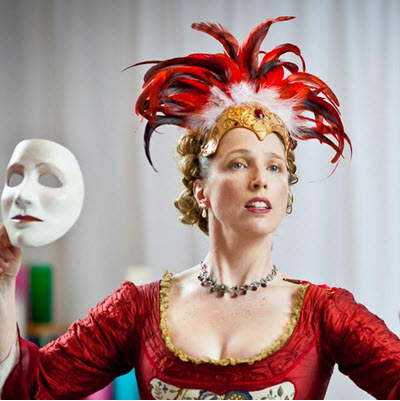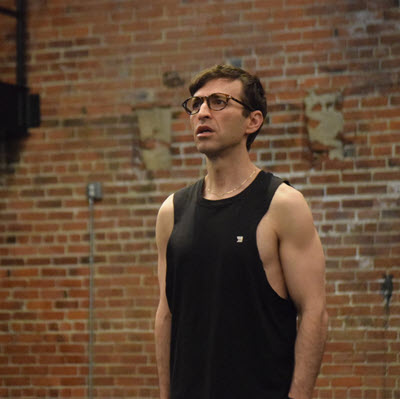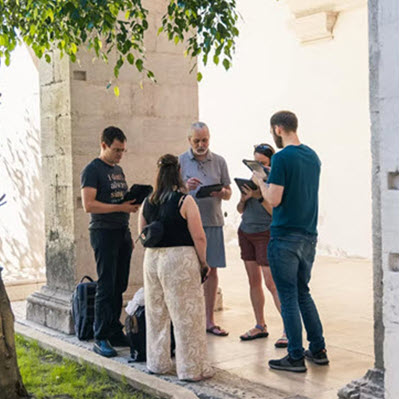by Parker Ramsay
Published July 23, 2023
Composers find expressive potential for period instruments, especially when used in historical ways
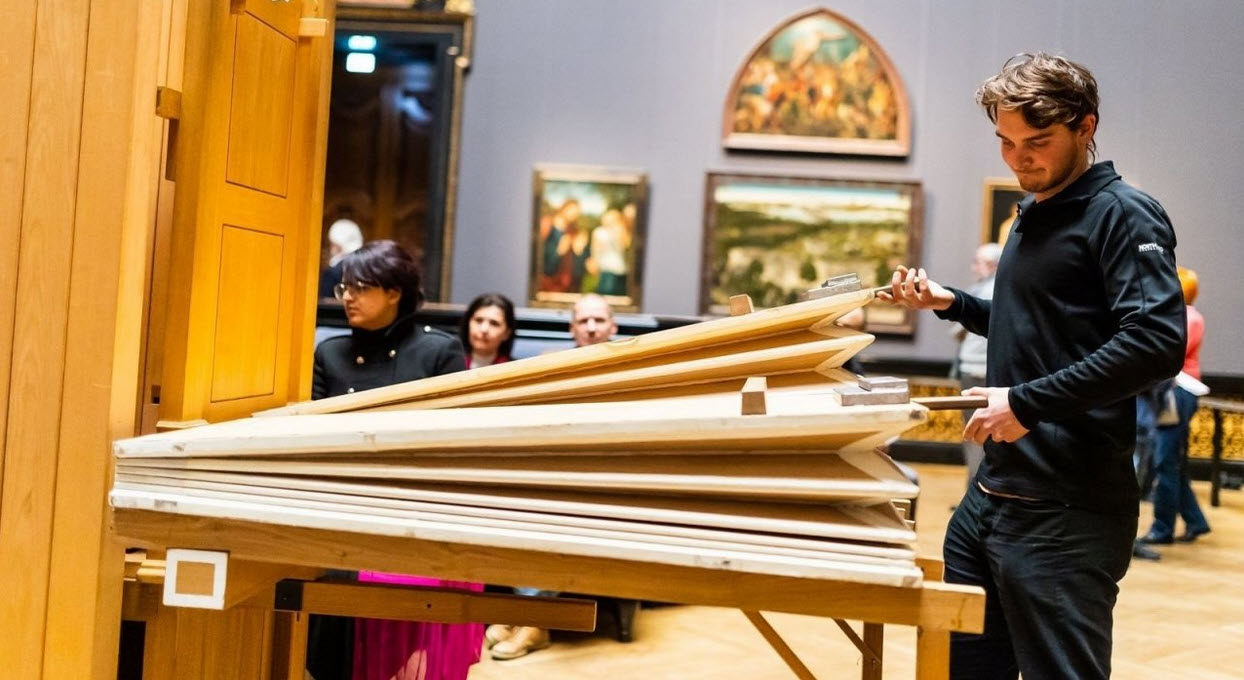
“Period instruments.” We often associate the term with the era in which they were either invented or were in their heyday. The time warp of historical performance thus entails some cartography to recover (or discover) a period instrument’s home turf. We often must take a step back from the instruments, viewing them as foreign objects, philosophically fusing time and space to make good L.P. Bartley’s famous quote, “The past is a foreign country: they do things differently there.”
But the fields of composition and contemporary performance have offered alternative paths to learning about the expressive potential of period instruments, and, intriguingly, even some historical aspects of how they were used. New music for old instruments is, of course, nothing new. Nor is the engagement by composers with varying degrees of historically informed performance. But in scouring the internet, there appear to be new directions revealing unknown aspects of old instruments.
To see what’s up, I reached out to a few composers and collaborators, fascinated to discover where varying lines of inquiry have led them.
In 2022, Artun Çekem composed music for viol quartet and electronics to be performed by Science Ficta at Columbia University, where’s he’s a doctoral student. The resulting work, Human Voices, draws its name from Marin Marais’ famed Les voix humaines, which inspired Çekem after a conversation with ensemble member Loren Ludwig.
“I first contacted Loren and told him about the idea of using 3D-printed human vocal tract models together with viols,” Çekem says. “He kindly wrote me a detailed response, touching upon the history of a particular viol repertoire that focused on the instrument’s ‘perceived vocality.’ The parallels were too obvious to ignore.”
When asked if the piece couldn’t just be replicated with modern instruments, Çekem explained that, since the gamba is a fretted instrument, he was able to expect relatively more precise results with microtonal combinations. “Frets allow for a static, almost electronic sounding quality when you wish to compose some consistently rough frequency beatings. The outcome would have been considerably different with four cellos, for example, in terms of the frequency interactions among the instruments.”
There’s admittedly a slight paradox in the idea that the precision (or specificity) of a period instrument offers flexibility or a point of inspiration. Intriguingly, the viola d’amore has also garnered a fair amount of interest in recent decades, thanks to brilliant performers such as Garth Knox. And a work like Chris Trapani’s Tesserae, scored for viola d’amore and electronics and composed for Marco Fusi, shows how historical exploration can go to unexpected places.
Why the viola d’amore? Trapani began by explaining that the instrument’s defining feature is that it has no standard tuning, but instead is re-tuned for each and every piece. “When I first gave Marco the score, I wrote ‘scordatura’ [which means detuning] to indicate how the instrument was to be re-tuned. He said I shouldn’t write that as there is no standard tuning for the viola d’amore to begin with. Instead, we decided to call it ‘accordatura’ or just ‘tuning.’”
But he also described his introduction to the tarhu by string player Ross Daly. “The tarhu is similar to a Turkish kemençe or a Cretan lira in that it’s tuned with gut strings, but also has Javārī bridges on its sympathetic strings, the likes of which you would see on a sitar,” Trapani told me. “When I heard the sound of the tarhu, it’s something that I thought I could emulate with a viola d’amore. The sympathetic strings are tuned as they might be on an Indian sarangi. That is, they are designed to resonate in sympathy with important notes that come up during the piece — sometimes in unison with the played strings and sometimes not.”
Historical tuning systems have long fascinated Trapani, but he has tended toward looking into ideas and treatises which predate Gioseffo Zarlino and other Renaissance theorists. “Many years ago, I’d written a piece at IRCAM for Julien Jalâl Eddine Weiss, a French qanun player I had met in Turkey, who was interested in recovering lost concepts of consonances in music. And so I spent time looking at very old treatises — such as Al-Farabi’s Kitab al-musiqi al-kabir from the 10th century — to find the purest consonant approximations in Arabic and later Turkish modes.”
‘The same emotional effects heard in singing’
I next spoke with Johannes Keller in Basel, who heads Studio 31+, a collective of musicians, researchers, composers, and instrument builders who share a common interest in music requiring more than 12 notes per octave. “Our approach is mainly inspired by historical concepts from the Renaissance period, such as the arciorgano and archicembalo by Nicola Vicentino or the clavemusicum omnitonum by Vito Trasuntino, all of which are keyboard instruments with more than 31 notes in each octave.”
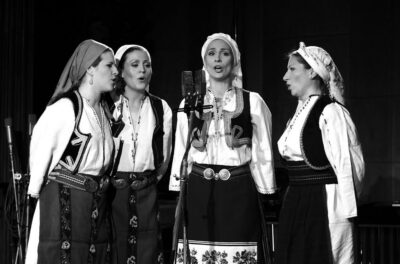
I initially reached out to Keller to ask about Georg Friedrich Haas’ Ceremony II, a four-hour installation work for 70 period instruments in just intonation, spread around Vienna’s Kunsthistorisches Museum in 2020. But we spent more time talking about how an arciorgano’s flexibility in intonation lent itself very well to working in non-classical idioms. “We once had a concert program where chromatic madrigals by Rossi and Sigismondo d’India mirrored traditional songs from Serbia, sung by the Dragana Tomic vocal ensemble,” Keller said. “We found that we were able to harmonize with Serbian folk music and match their intonation almost exactly, thus using our own highly complex intonation systems to the same emotional effect heard in the singing.”
When asked if the use of such instruments was just a fringe benefit of the instrument’s complexity, Keller quoted Vicentino himself, who claimed that the arciorgano could accompany “all manner of songs and airs according to the idiom which all the nations of the world sing.”
It’s tempting to come to a trite conclusion about the universality of music and the transcendence of communication across time and space. After all, it’s a paradox that a contemporary approach to a period instrument invites us to reconsider the past.
Parker Ramsay is a harpist and keyboardist, specializing in early and contemporary repertoires. He has written for The New York Times, The Washington Post and VAN Magazine. He lives in Paris.

